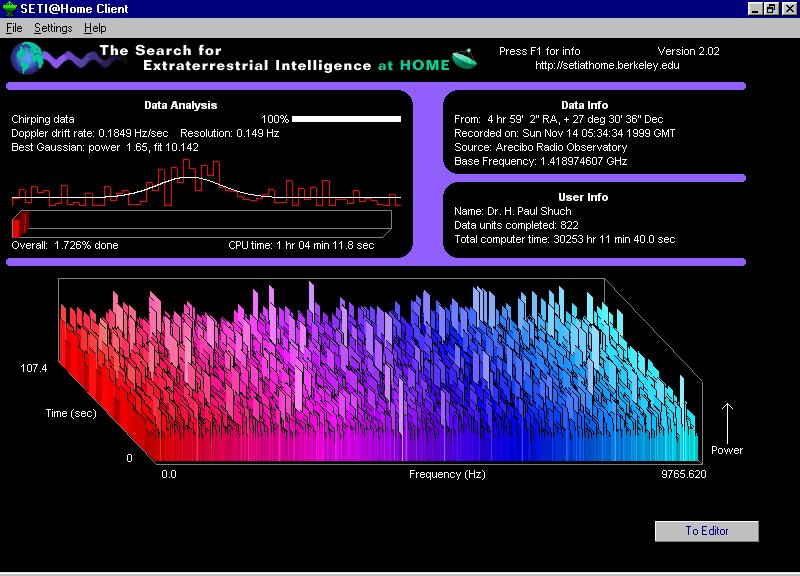
It shows the paraboloidal reflector (mirror) to the left, the tiltable flat reflector (mirror) to the right, and the aluminum-covered ground plane in between.Įach of the above photos was taken in 1995, about 18 years after the occurrence of the "Wow!" signal. The photo to the left is a view looking almost due west. The paraboloidal (curved) reflector is in the foreground (furthest to the south) and the flat reflector is more in the background (furthest to the north). The aerial photo to the right shows a view looking north by northwest. Here is an aerial photo of the "Big Ear" radio telescope of the Ohio State University Radio Observatory looking approximately east by northeast. Note that a significant portion of this report is moderately to highly technical, and it must be so in order to completely describe the radio telescope and the signal. The majority of this report deals with the details of the radio telescope and the signal. Then, I will describe the characteristics of the "Wow!" signal. In this Introduction I will first describe briefly the "Big Ear" radio telescope. What have we learned about that signal over the past 30 years? Could it have come from an intelligent civilization beyond our solar system, or could it have been just an emission generated by some activity of our own civilization? Thus, at the time this article is being written it is near the 30th anniversary of the detection of that now famous radio source. Eastern Daylight Savings Time on August 15, 1977. The "Wow!" source radio emission entered the receiver of the Big Ear radio telescope at about 11:16 p.m.

In particular, the Wow! signal only lasted for a little over a minute, which would be unusual for a comet. Specifically, the spokesperson notes that both comet 266P and P/2008 were too far away to have caused the signal, and that there's no prior evidence suggesting that comets can create the type of signal spotted in 1977. Update: A spokesperson from the OSU Radio Observatory, where the Wow! signal was detected, has reached out to express skepticism of this discovery. Now that we know comets can create these otherworldly signals, any future signals we get will have to be vetted much more carefully. This is bad news for anyone holding out hope that the Wow! signal would be aliens, but it's a solid conclusion to one of the biggest mysteries in astronomy. Paris also examined several other similar comets and found the same type of hydrogen cloud and the same type of signal, which means that even if comet 266P wasn't the specific source of the Wow! signal, another comet is most likely the culprit. Get the PM newsletter and get more answers from the great beyond Paris spent about four months in late 2016 and early 2017 with a telescope pointed at comet 266P, and found strong signals of the same type as the Wow! signal. Specifically, the 2016 paper identified two comets, 266P/Christensen and P/2008 Y2 (Gibbs), that were both in the area where the Wow! signal was detected.īoth of these comets have large hydrogen clouds surrounding them that could produce the kind of signal detected in 1977.

In 2016, he released a paper along with fellow astronomer Evan Davies suggesting that the signal could have been caused by a comet orbiting in the inner solar system. Ohio State UniversityĪstronomer Antonio Paris has been studying the Wow! signal for a long time. The strength of the signal ranges from 1, low, to Z, high. The Wow! signal, spotted and annotated by astronomer Jerry Ehman.


 0 kommentar(er)
0 kommentar(er)
